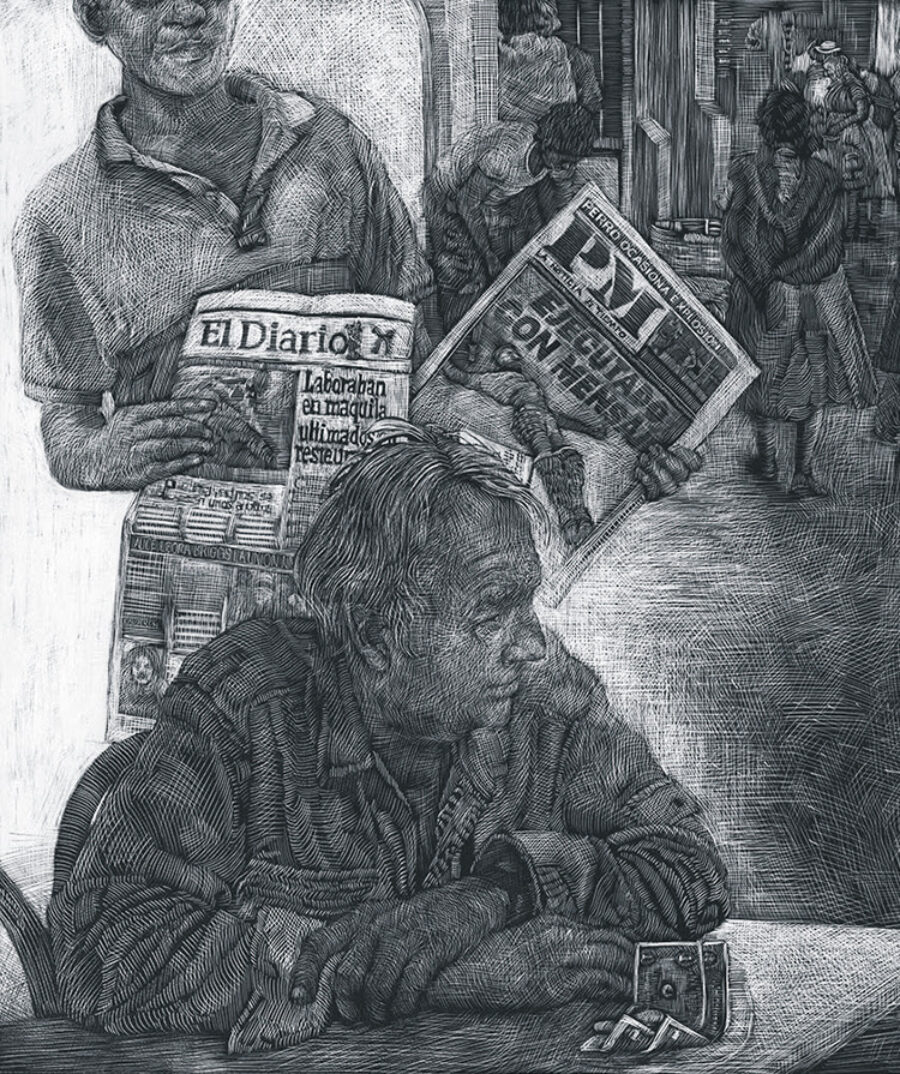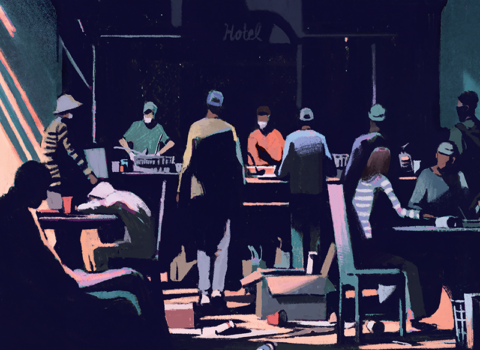
Tocino fresco (detail), a sgraffito portrait of Charles Bowden, by Alice Leora Briggs © The artist. Courtesy Evoke Contemporary, Santa Fe, New Mexico; Etherton Gallery, Tucson, Arizona; and the University of Texas Press
Discussed in this essay:
America’s Most Alarming Writer: Essays on the Life and Work of Charles Bowden, edited by Bill Broyles and Bruce J. Dinges. University of Texas Press. 352 pages. $29.95.
Dakotah: The Return of the Future, by Charles Bowden. University of Texas Press. 184 pages. $24.95.
Jericho, by Charles Bowden. University of Texas Press. 240 pages. $24.95.
Blue Desert, by Charles Bowden. University of Arizona Press. 224 pages. $19.95.
The Red Caddy: Into the Unknown with Edward Abbey, by Charles Bowden. University of Texas Press. 120 pages. $16.95.
The journalist Charles Bowden first…









































































































